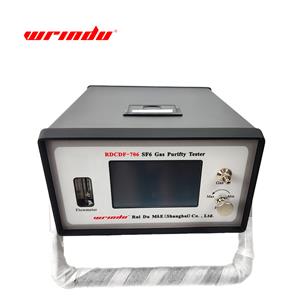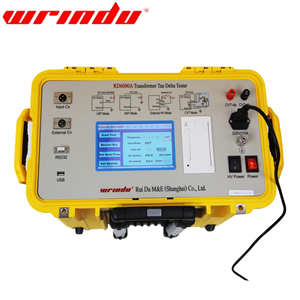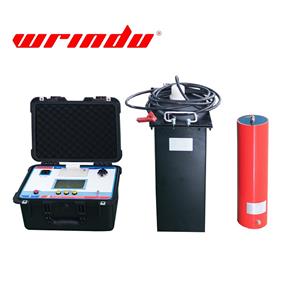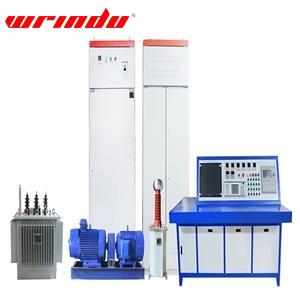Sweeping frequency response analysis: A key tool in transformer testing
What is a Sweep Frequency Response Analyzer (SFRA)?
A Sweep Frequency Response Analyzer (SFRA) is a testing tool used to assess the mechanical and electrical health of transformers, reactors, and other equipment with windings. It works by sending signals at different frequencies into a transformer's winding and measuring the returning signals. By analyzing these signals, you can identify any damage, physical changes, or electrical faults in the transformer.
SFRA is a critical diagnostic tool used in various scenarios, such as baseline testing of new transformers, routine maintenance checks, or after a fault or accident. The goal is to guarantee the transformer is in goodPrecise SFRA method detects winding distortions, bulging, and displacements in 6kV+ transformers without disassembly. working condition and to detect any potential issues before they become serious problems.
Why is SFRA Important?
Transformers are essential components in electrical grids, and their failure can lead to power outages and costly repairs. SFRA allows technicians to detect mechanical deformations, winding shifts, or other structural issues in a transformer that may not be visible but could still affect performance. It is like getting a health checkup for the transformer!
How Does SFRA Work?
SFRA testing involves applying a series of different frequencies to the transformer's windings. The test measures the transformer's response at each frequency. Each transformer has a unique "fingerprint" of frequency responses, which can be used to compare with previous measurements. If the transformer's response changes significantly, it may indicate problems like winding deformation, insulation breakdown, or faulty connections.
Some Common Mistakes in SFRA Testing
While SFRA is an excellent tool, it is very sensitive to the setup. Mistakes in the testing process can lead to inaccurate results. Here are some common errors to avoid:
Poor Grounding
When the grounding is not solid, additional impedances can be introduced, which can distort the test results. This may cause the transformer's response to appear different from what it actually is. So, what can we do when this kind of mistake occurs? Ensure that all grounds—both safety and measurement—are securely connected and free from additional resistance. By maintaining a proper grounding setup, we can achieve more accurate and reliable test results.
Poor Test Lead Connections
If the test leads are not properly connected to the transformer's terminals, unwanted impedance can be introduced into the circuit, affecting the accuracy of the measurements. So, what steps should we take if this mistake occurs? To avoid this, it's important to clean the terminal surfaces before making the connections and ensure the leads are securely attached. This simple step can greatly improve the quality of the test results, ensuring the data is reliable.
Inconsistent Tap Changer Positioning
Tap changers adjust the voltage of the transformer, and changes in their positions between tests can affect the frequency response. When the tap position changes, it can cause variations in the test results, making it difficult to compare them over time. So, how can we handle this mistake when it happens? Always record the tap changer settings and ensure that the tap position remains consistent across all test sessions. This will help maintain accuracy when comparing results and ensure that future tests are reliable for long-term monitoring.
Inconsistent Configuration of the Stabilizing Tertiary Winding
The configuration of the stabilizing tertiary winding can impact the frequency response of the transformer. Variations in how the tertiary winding is grounded or left floating can lead to differences in test results. So, what can we do when this kind of mistake occurs? It's essential to ensure that the configuration of the stabilizing tertiary winding remains consistent during each test. Record any changes made to the configuration so that the test setup can be repeated exactly in future sessions, allowing for accurate and consistent results.
Why Choose RDRB-Ⅳ Sweep Frequency Response Analyzer?
The Sweep Frequency Response Analyzer combines accuracy, speed, safety, and ease of use, offering a comprehensive solution for transformer diagnostics. It ensures fast, precise measurements and powerful analysis, all while providing robust safety features and intuitive software.
Accurate Winding Measurement: Detects winding distortions, bulging, and displacements in 6kV+ transformers without the need for disassembly.
Fast Testing: Measures a single winding in just 1-2 minutes, making diagnostics quick and efficient.
High Frequency Precision: Delivers exceptional 0.001% frequency accuracy for reliable results.
Stable Frequency: Digital frequency synthesis ensures consistent and stable measurement performance.
Safety Protection: Features 5000V voltage isolation, keeping your testing equipment safe.
Additionally, the analyzer offers simultaneous curve display, supporting up to 9 curves at once, with automatic deformation diagnosis. The robust software meets industry standards (DL/T911-2016 and IEC60076-18), ensuring reliable data analysis. Data is stored in an easy-to-manage database, and smart report generation creates reports in Word or JPG format for seamless sharing. With one-key operation, testing is simplified, and the user-friendly interface guides you effortlessly through each step.
Click here to learn more about RDRB-IV Sweep Frequency Response Analyzer.
Related Articles are as follows.
Calculation of no load loss of Transformer.
Why is transformer testing so important?
Necessary tests about transformer.




